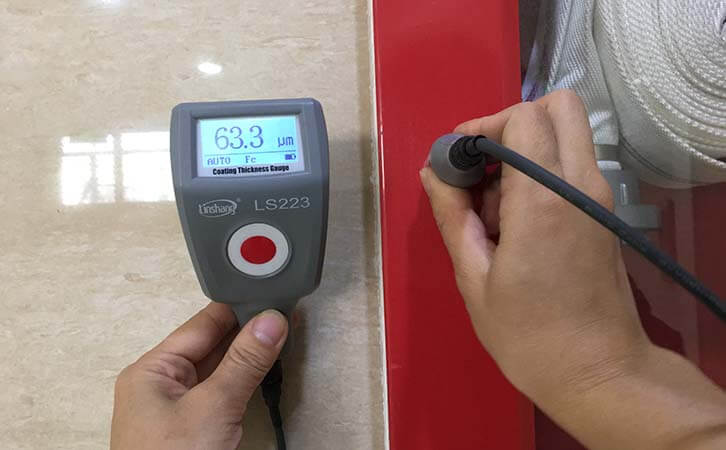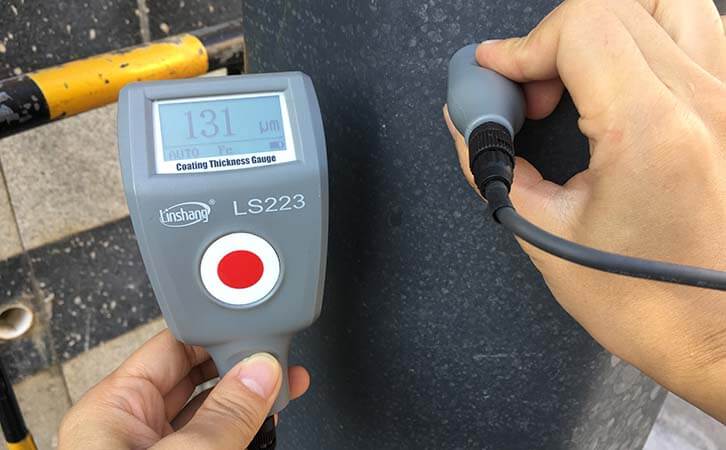Standard of Coating Thickness Detection and Paint Thickness Meter Application
Modern society has developed science and technology rapidly, and coating thickness testing is widely used in many industries, such as manufacturing, metal processing, chemical industry and commerce. It can also avoid the cost increase caused by excessive coating thickness and unnecessary cost loss.
1. Paint coating
In paint coating, reflective paint is generally used for coating and the dry film thickness and the amount of reflective paint need to be controlled. The wind force, nozzle size, pressure, uniformity of dry film, roughness and residue of paint spray tubes are all common influencing factors in paint coatings, which are divided into controllable and uncontrollable factors. The paint thickness meter can be used for non-destructive thickness measurement and easy adjustment of paint coating thickness.
2. The fire protection coating of steel structure
The general meaning of fire-resistant coatings for steel structures is that by applying paint on the some flammable materials surface, it can effectively extend the fire resistance time and improve the fire resistance of the material. According to the fire resistance and combustion performance of fire-resistant coatings, the country classifies fire-resistant coatings for steel structures into first and second grades. Correspondingly, the fire-resistant coating thickness for steel structures is also divided into coating thicknesses of 3 mm (within 3 mm), 7mm or less, coating thickness greater than 7mm, 45mm or less.
3. Coating thickness detection standards
The performance of the coating must be based on the coating thickness as a parameter condition and many coatings must be comparable under the same thickness conditions. The coating thickness test stipulates that the minimum thickness of a layer of colored coating is not less than 0.0035 inches and the maximum is not more than 0.006 inches. The the two-layer coating thickness shall not exceed 0.012 inches. When the coating thickness test has no design requirements, the total allowable deviation of the dry film thickness is generally -25 microns. The paint thickness meter helps to control the fine coating thickness measurement and meet the specifications when there are design requirements.
4. Coating thickness testing requirements
Coating thickness gauges have been called paint thickness meters, paint thickness gauges and paint mil gauges. The fine detection of the coating thickness is helpful to confirm the optimal life of the coating and understand the relationship between coating thickness and the degree of roughness. Therefore, standardizing the testing of coating thickness has both practical and theoretical significance.
It is necessary to pay attention to the metal characteristics of the substrate when testing coating thickness . And it is required that the paint thickness meter should be as similar or consistent with the metal and roughness of the substrate metal as possible. In addition, it is necessary to check whether the thickness of the base metal exceeds the critical value of the coating thickness measuring instrument and pay attention to edge effects, surface cleanness, curvature, number of readings, magnetic field and probe orientation during the test.
- High precision coating thickness gauge for used car
- Automotive paint protection films coating thickness gauge
- Plating Thickness Measuring Instrument for Detecting Anti-corrosion Coating
- Linshang LS220, LS191, LS160A– Necessary for Car Cover Inspection
- Coating Thickness Gauge for Second Hand Vehicle
- Zero Adjustment Step of Coating Thickness Gauge

